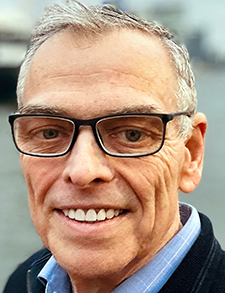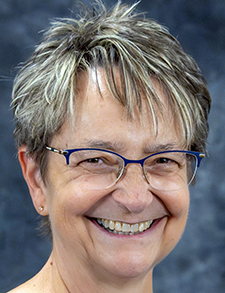 When you’ve seen one hospital-medicine group, as the saying goes, you’ve seen one hospital-medicine group.
When you’ve seen one hospital-medicine group, as the saying goes, you’ve seen one hospital-medicine group.
But when you’ve seen one multi-site hospital-medicine group, chances are you’ve seen the challenges facing many of them.

Dr. Frederickson
“There’s more commonality of challenges,” said Thomas Frederickson, MD, FACP, MBA, SFHM, a Nebraska-based system vice president of hospital medicine operations for CommonSpirit Health Physician Enterprise.
Dr. Frederickson’s eye toward shared experience comes from the right perch. He’s the chair of SHM’s Special Interest Group for Multi-site Leaders, whose remit is to help managers and top physicians navigate the complexities of running operations over multiple hospitals.
“Most of us do work in fairly large healthcare systems, and most fairly large healthcare systems seem to be on this journey to try and bring more standard-operation practices in all areas, including hospital medicine,” Dr. Frederickson said. “That tends to be a common theme, and a theme that we embrace.”

Ms. Flores
Longstanding SIG member Leslie Flores, partner emeritus of Nelson Flores Hospital Medicine Consultants in La Quinta, Calif., says that while the pitfalls facing all hospital medicine managers share traits, multi-site leaders feel a particular bond.
“Staffing and scheduling, and how do you optimize the contribution of nurse practitioners and physician assistants … those are common to everybody,” said Ms. Flores, seen as a driving force of the SIG in its earliest days. “But then there is another level where there are unique issues that multi-site leaders face that hospitalist leaders at a single site don’t face.
“Culture issues across multiple sites, and how do you establish common culture across sites? How do you deploy resources across sites to make the most use of your resources? How do you deal with things when one site is very accepting of the work of nurse practitioners and physician assistants, but another site is much more like, only physicians can do this work kind of thing?”
Dr. Frederickson says that having a peer group for health leaders dealing with multiple hospitals is invaluable.
“We meet periodically, we have engagement events, we think about what topics resonate,” he said. “We bring experts in and facilitate discussions. But a lot of times it’s just introducing discussions, introducing topics in more of a guided discussion on the topic.
“Then, kind of beyond that, it’s the connections. ‘Oh, I met Dr. So-and-so, and this is what they’re doing in their healthcare system, and that issue just came up.’ Getting to know these folks, and having had conversations with them, it’s useful.”
Ms. Flores says that the SIG also serves as a way to breed collegiality among hospitalists who can sometimes view each other as competitors.
“Historically, people responsible for hospital-employed groups, and people working for management companies have seen each other as competitors, because there’s always that concern that, if you’re in an employed hospitalist group, that leadership of the health system might decide to outsource their hospitalist program to a management company,” she said. “Or, if you’re a management company rep, you’re always worried that the health system might say, we can do it cheaper ourselves. Now that we know how you do this, and we’ve sort of learned all your systems, we can do it ourselves.
“There’s always been, I think, this little bit of a sense of competition, or concern about who is going to win out there. Through this SIG, I think we’ve seen there is room for both employed hospitalist programs and outsourced hospitalist programs. And that we don’t have to compete against each other or worry about each other. There is plenty of room for both.”
Dr. Frederickson says one of the high points on the SIG’s annual calendar is a forum that lasts about a day and a half and gives dozens of multi-site leaders a chance to meet in person. This year’s event was held in May and focused on “culture and developing common culture across different sites, and the challenges around culture.”
“It’s an opportunity to get together, informally, with a peer group of people to discuss the issues that are most important to you right now,” Ms. Flores said. “You kind of put your issues on the table, hear from other people what they’re doing about them, and be able to share what you’re doing that you’re very proud of that you think is innovative to other people, and hear them say, ‘Oh, wow, that’s cool. I want to learn more about that.’ It’s just been a really nice way to get people talking and networking on a very intimate, sort of informal basis.”
Ms. Flores adds that, given the increasing pace of healthcare systems joining forces, the work of the SIG will only grow in stature over the coming years.
“All these mergers and acquisitions are going to mean that there are more multi-site leaders,” she said, “and they are going to be responsible for a much larger scope of responsibility going forward.”
Richard Quinn is a freelance writer in New Jersey.